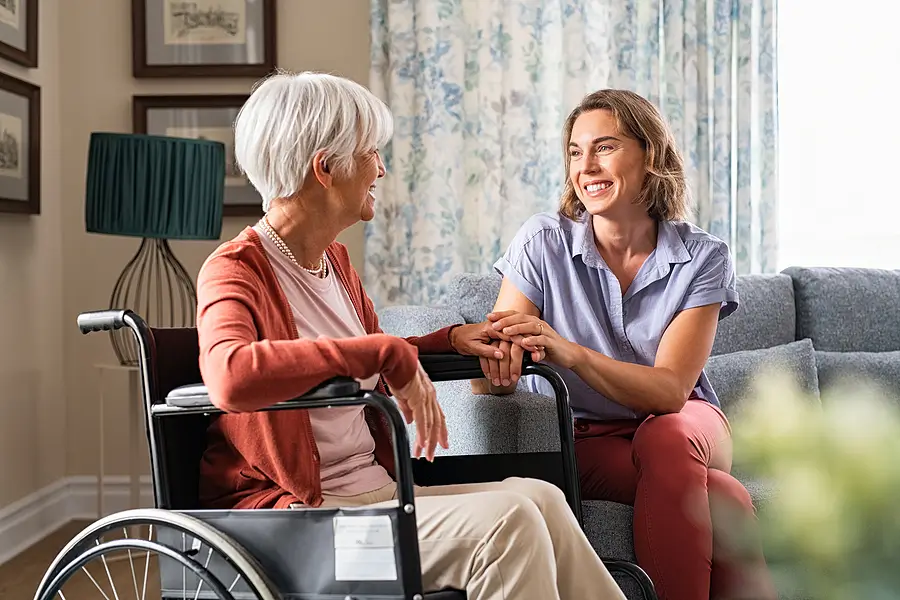Making your rentals accessible isn’t just a legal requirement—it’s a smart, community-focused move!
As a property owner, you want your rental properties to be as inviting and accommodating as possible. Whether you're aiming to attract a larger pool of tenants or are committed to ensuring equal housing opportunities, accessibility should be on your radar.
It’s not just about complying with federal nondiscrimination laws like the Americans with Disabilities Act (ADA) and the Fair Housing Act—it's about creating an inclusive living environment for all potential tenants, including those with disabilities.
If you're in Texas and managing rental properties, understanding what accessibility features to add is key to offering a welcoming space and avoiding legal headaches. Plus, let’s be real: making your property more accessible attracts more tenants, enhances your community reputation, and drives long-term success.
So, let’s explore what you need to know about making your Texas rental properties more accessible and which modifications are practical for you and life-changing for tenants.
Key Accessibility Features to Consider in Your Texas Rental Home
In an increasingly inclusive society, ensuring that rental properties meet accessibility standards is essential for accommodating diverse needs and prospective tenant's disability. This guide outlines essential accessibility features that every Texas rental should include to promote comfort and independence for all residents:
Exterior and Entrances
1. Wheelchair Ramps
This provides easy access to your Texas rental home, particularly for individuals with mobility impairments, as they bridge the gap between elevated spaces, allowing for safe and independent movement.
2. Accessible Entrances
Make sure there's at least one entrance without steps and that it's wide enough for a wheelchair to fit through. That way, disabled tenants can get in and out easily.
3. Accessible Parking
Your parking spaces near the entrance must be big enough for cars with wheelchair ramps or other mobility devices for public accommodations.
4. ADA-Compliant Pathways
There should be a clear and smooth path from the parking lot or sidewalk to the front door, without any bumps or obstacles.
Interior Modifications
5. Wider Doorways
You can provide reasonable accommodation for everyone by installing doorways that are at least 32 inches wide to allow wheelchair access.
6. Lever Door Handles
Use lever handles on the doors instead of round knobs. They're easier to grab and turn, especially for people who have trouble with their hands or arms.
7. Accessible Light Switches
The height of light switches and thermostats should be 15 to 48 inches, which is easy to reach for everyone, including people who are in wheelchairs or have trouble reaching up.
8. Lowered Electrical Outlets
Electrical outlets should be installed higher up the wall for easier access.
Kitchen
9. Lowered Countertops and Cabinets
You must arrange your kitchen counters and cabinets so that they are accessible from a seated position or for those with limited reach.
10. Accessible Sinks
Lowered sinks are preferable with easy-to-operate, lever-style faucets installed on them.
11. Roll-Under Counters and Sinks
You have to ensure that there is enough space under counters and sinks so wheelchair users can roll underneath and use them comfortably.
Bathrooms
12. Grab Bars
Put grab bars near the toilet and in the shower or bathtub. That way, people can hold on to them for support and stay safe.
13. Roll-In Showers
Your shower rooms or shower area must be free of any barriers to allow wheelchair access.
14. Handheld Showerheads
Use a showerhead that can be adjusted and has a long hose. These types of showers can be easily reached from different angles and positions, making them more accessible.
15. Raised Toilets
Install toilets that are a bit higher so people who are in wheelchairs or have trouble getting up and down can use them more easily.
General Amenities
16. Accessible Flooring
Use smooth floors like tile, wood, or laminate instead of thick carpet. This will allow people with disabilities to move more easily without tripping or getting stuck. This is especially important if the tenant has a support animal.
17. Open Floor Plans
Open floor plans without too many walls or furniture blocking the way would make it easier to move, especially for disabled people with service animals.
Common Areas
18. Accessible Mailboxes
The mailbox should be located in a convenient and accessible location. It should also be at a height that is easy to reach for all people. The mailbox should also be designed to be easy to open and close, even for people with limited dexterity.
Emergency and Safety Features
19. Visual and Audible Fire Alarms
Having visual and audible fire alarms in your rental home is crucial for ensuring the safety of all tenants, especially those with hearing or visual impairments.
Visual alarms, such as flashing lights, can provide a vital warning for individuals who are deaf or hard of hearing, while audible alarms can alert those who are blind or have low vision. By combining both types of alarms, you can create a safer environment for everyone in your rental property.
20. Accessible Emergency Exits
Emergency exits must be marked for disabled people, including those with visual impairments, to ensure they can quickly and safely evacuate the premises in case of an emergency. You can use large, high-contrast, or tactile signage that is easily visible to everyone.
Benefits of Creating an Accessible Living Environment
Now, here’s the fun part—adding accessibility modifications to your rental properties can seriously pay off.
- Attracting More Tenants: Accessible properties appeal to a broader range of tenants, including seniors, people with disabilities, and even families with young children. You’re not just adding grab bars; you add value and provide reasonable accommodations for them.
- Providing Equal Opportunity: In addition to avoiding legal issues, creating accessible rental homes shows you’re a landlord who values inclusivity and equal housing opportunities.
- Positive Reputation: In Texas, where rental markets are competitive, setting yourself apart as a landlord who prioritizes accessibility can boost your reputation and attract long-term, loyal tenants.
Foster Community by Creating Accessible Environments
Ensuring your rental properties are accessible to all tenants is a legal responsibility and an opportunity to create a more inclusive and welcoming environment. By adding key accessibility features for a reasonable accommodation request, you open the door to a broader tenant base, including individuals with disabilities and seniors.
At Terra Residential Services, we understand the importance of accommodating the needs of all renters and can guide you through the process of making your properties ADA-compliant while maintaining their value.
As professional property managers, we offer tailored solutions to help landlords provide accessible housing without stress. From handling tenant requests for reasonable modifications to navigating the legal requirements and accessibility guidelines of the Fair Housing Act and ADA, we’ve got you covered.
Ready to make your rental more inclusive? Contact Terra Residential Services today, and let’s work together to create a welcoming space and equal access for all Texans!


